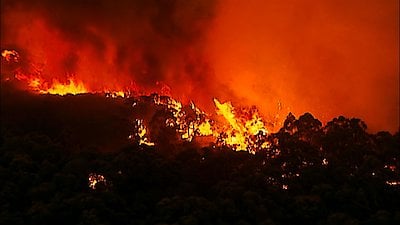
Nature Season 29 Episode 14 Survivors of the Firestorm
- April 17, 2011
-
(13)
In Nature season 29 episode 14, titled "Survivors of the Firestorm," viewers are taken on a journey through landscapes ravaged by fires and the animals that have learned to adapt and survive in their aftermath. With wildfires becoming more common and more severe due to climate change, this episode showcases the resiliency of nature and brings attention to the importance of protecting and preserving habitats.
The episode begins with footage of the devastating California wildfires of 2018, which destroyed over a million acres of land and homes, and left thousands of animals homeless and struggling to find food and shelter. We follow a team of scientists and wildlife biologists who are working together to understand how different species of animals have responded to the fires and adapted to their new environments.
The team first takes us to a burned-out forest in Idaho, where they have set up motion-sensor cameras to capture the behavior of wildlife. We see stunning footage of elk, mule deer, and black bears foraging for food among the charred remains of trees and vegetation. The researchers explain that these animals are taking advantage of the flush of new growth that appears after a fire, which is a good source of nutrients. They also show us how these animals have altered their behavior in response to the fires. For example, elk are now more likely to move in larger herds and stay closer to human settlements, where the grass is greener and there is less competition for food.
Next, we travel to the Sonoran Desert in Arizona, where a different type of fire has wreaked havoc on the ecosystem. The researchers explain how invasive grasses have been fueling wildfires in this area and transforming the landscape. We see how the fires have wiped out native cacti and other vegetation that desert animals depend on for food and shelter. But even in this arid environment, some animals have managed to survive and thrive. We meet a pack of coyotes who have learned to prey on non-native rodents that have proliferated in the wake of the fires. We also see how a rare species of desert tortoise has adapted to the changing landscape by seeking refuge in rocky outcroppings that are less susceptible to fire.
Finally, we travel to the Australian bush, where the team explores how different species of animals have coped with the catastrophic bushfires that ravaged the country in 2019-2020. We see how kangaroos and wallabies have bounced back by seeking out areas with new growth and switching to different types of vegetation. We also see how a group of koalas who were rescued from the fires are being cared for and rehabilitated at a wildlife hospital.
Throughout the episode, the researchers provide insights into the behavior of different species and the challenges they face in the wake of fires. They also emphasize the importance of protecting and preserving habitats, both to prevent wildfires and to provide safe havens for wildlife. The episode ends on a hopeful note, with a message that nature is resilient and adaptable, and that there is still time to make a difference in protecting it.
